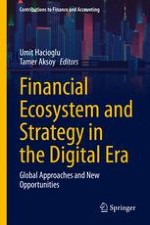2021 | OriginalPaper | Chapter
6. Business Strategy for Sustainable Development in the Digital Era: Green Management
Author : Umit Deniz Ilhan
Published in: Financial Ecosystem and Strategy in the Digital Era
Publisher: Springer International Publishing
Activate our intelligent search to find suitable subject content or patents.
Select sections of text to find matching patents with Artificial Intelligence. powered by
Select sections of text to find additional relevant content using AI-assisted search. powered by
